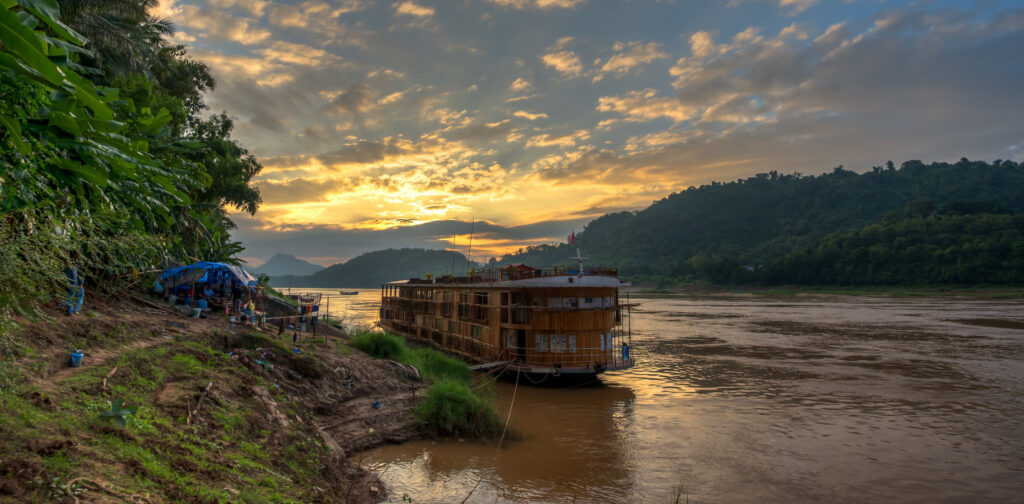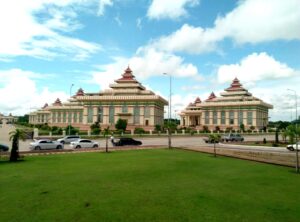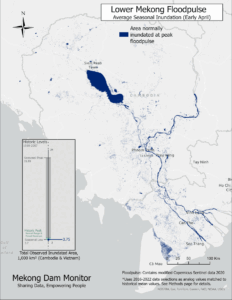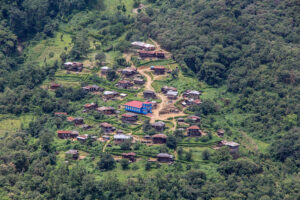Executive Summary
Vietnam’s COP26 commitments delivered in November 2021 offer an ambitious agenda to de-carbonize its economy by avoiding new coal plants and transitioning towards clean energy. This is a significant departure from existing energy plans and an indication that Vietnam is politically motivated to move to a more diverse and less carbon-intensive energy mix. As Vietnam re-prioritizes domestic energy investment and rethinks power imports, it can also reduce threats to the Mekong Delta by importing power from Laos that excludes high risk dams and prioritizes imports from solar, wind, and low-impact hydropower plants.
Vietnam’s previous power development plans anticipated more than 40,000 MW of new coal plants to be built in coming decades, and Vietnam’s commitment to build no new coal plants will require a major change to the power mix. One aspect of this will be to robustly expand renewable solar and wind power. Vietnam has a good track record of rapidly scaling up variable solar and wind, moving from almost none of either in 2017 to approximately 20,000 MW of both by early 2022. This is a major success, but the Mekong Infrastructure Tracker shows that to date Vietnam’s rapid deployment of solar has been largely driven by domestic investment. Domestic funds are limited, and so as Vietnam moves to expand renewable power, it will need to grapple with regulatory and grid integration issues in order to attract international finance.
Vietnam plans to meet future power demand by importing more electricity from Laos. This can be done in ways that either promote or threaten the integrity of the Mekong River, which underpins the region’s extraordinary agricultural and fisheries productivity as well as the climate resilience of Vietnam’s own Mekong Delta. Vietnam’s choices about which projects to support can be used to maintain long stretches of free-flowing rivers by avoiding sourcing power from badly placed hydropower projects. A Lao hydropower project with potentially huge environmental impacts is the Sekong A dam, which is being built by the Vietnamese company Song Da 6. This dam would disconnect the Sekong River, the last free-flowing major tributary of the Mekong, and negatively impact fish and sediment for only 86 MW of power. By strategically selecting lower-impact hydropower projects or solar and wind farms in southern Laos, Vietnam can increase power imports while avoiding unnecessary impacts on agriculture and fisheries.
Opportunities to increase non-hydro electricity imports are growing. Vietnam and Laos have negotiated the first cross-border trade deal for wind energy in ASEAN, setting a precedent for regional trade in solar and wind as the ASEAN Power Grid starts to take shape. Cambodia, Laos, and Vietnam have an opportunity to coordinate energy planning and investment in ways that help all three countries achieve energy security while minimizing social and environmental costs. A study by IUCN and Stimson Center on energy options in the Sekong-Sesan-Srepok (3S) River Basins shows that international cooperation on energy planning is vital to maximizing mutual benefits.1
This report is an expansion of a series of web stories first published on the IUCN website and explores how Vietnam can implement its COP26 energy commitments in the power sector through supporting the renewable energy transition at home, sharing lessons learned with decisionmakers in Laos, and coordinating on electricity trade to minimize environmental impacts.
Web Stories
The original web stories are available on the IUCN website at the following links:
- Vietnam’s COP26 Commitments: A Moment of Truth
- The Sekong A dam in Lao PDR and the Mekong Delta: a moment of decision for Viet Nam
- Unlocking international finance for Vietnam’s renewable energy transition
- Opportunities and challenges in expanding wind in Vietnam’s electricity mix
- Grid integration of renewables
- Regional cooperation on electricity trade
Recommendations
- Vietnam should terminate support for the Sekong A dam and replicate its highly successful domestic expansion of solar and wind power in Laos in order to meet sustainability goals under Resolutions 120 and 55. As preparatory and early construction work on the Sekong A dam continues, the window of opportunity to avoid the Sekong A dam’s impacts and risks to the Mekong Delta and Tonle Sap is shrinking. There are numerous other projects that could replace the Sekong A dam, and Cambodia, Laos, and Vietnam could use this limited window of time to collaboratively and strategically review these projects in the Sekong basin to identify a sustainable path forward. If Vietnam refuses to purchase the power, there is not an alternative power market immediately available. Vietnamese construction and investment firms have substantial experience with solar and wind projects domestically, and the government has already set up terms for a power purchase from wind projects in Laos. Vietnam can provide both strategic support in identifying priority alternatives and also bring investment to the table to help implement an alternative plan. Doing so would help Laos meet its export and revenue goals, ensure that markets in Cambodia and Vietnam can meet their energy needs through electricity imports, and also keep the Sekong mainstream free-flowing.
- Vietnam’s National Mekong Committee (NMC) should request that Laos pause forward movement on the Sekong A dam until it has gone through Mekong River Commission (MRC) notification and review processes. There is a time-sensitive opportunity to request a halt and a full review of the project under the MRC’s prior notification process for dams with transboundary impacts. While the MRC’s best known Procedures for Notification, Prior Consultation, and Approval are only fully applicable for dams on the Mekong mainstream of the Mekong River, the MRC does have a notification process for tributary dams with significant transboundary impacts which should apply to the Sekong A. Vietnam and Cambodia’s NMCs have a vested interest in ensuring that the project goes through review in order to ascertain more details on the impacts and potentially provide space to discuss alternative projects.
- Vietnam must address grid integration to ensure continued progress toward its COP26 commitments. Even as it pauses new wind and solar investments, the government needs to invest heavily in improved transmission and storage when it becomes economically viable to ensure smooth integration of future renewable energy. The first and easiest opportunity is to prioritize funding for grid improvements. Historically, EVN, the state-owned utility, has invested heavily in power while also maintaining a monopoly over transmission. As a result, EVN has limited funding to alleviate the grid bottlenecks that are now limiting solar and wind expansion. Vietnam can rely on private sector for power generation, but short-term grid investments will have to be made by EVN given the current legal framework and length of time to bring transmission projects to fruition. Nevertheless, there may be opportunities to open specific grid infrastructure projects to private investment to remove key bottlenecks as the government opens up transmission to private investment.
- EVN can work with international funders such as the Development Finance Corporation, Japan Bank for International Cooperation, and Export Finance Australia to build out Vietnam’s transmission system to manage higher amounts of variable energy. Grid constraints brought solar and wind development in Vietnam to a standstill in 2022. Vietnam can take advantage of major new funding sources through COVID recovery plans and green funds to alleviate this bottleneck, maintain its widely admired renewable energy transition, and avoid similar future challenges as it races towards net zero carbon emissions. The Biden Administration’s Indo-Pacific Strategy prioritizes clean energy, but the U.S. Development Finance Corporation has yet to identify a flagship renewable energy project in Southeast Asia. Post-COP26, the Japan Bank for International Cooperation announced a decarbonization initiative for emerging economies in Southeast Asia as it works toward a net-zero emissions portfolio. Even China, historically a big funder of coal plants, issued guidelines in March 2022 on greening the Belt and Road Initiative by supporting low-carbon projects including renewables and energy storage.51 If it gets regulations right, Vietnam can unlock substantial new funding to power its renewable energy transition and perhaps identify one or more flagship clean energy opportunities through these initiatives.
- In parallel to addressing grid integration issues, the government should issue a clear and longer-term revised PPA that is attractive to international investments. The temporary pause on new solar and wind projects and the ongoing issues with curtailment and grid integration will dissuade further investment in the short-term but identifying a clear long-term policy will help pull in pipeline investment in both solar and wind. Future permitting and pricing policies must be transparent, clear, and include longer time horizons to avoid uncertainty and attract international investors. As electricity demand continues to rise, direct PPAs could play a key role in decarbonizing Vietnam’s industrial sector. The industrial sector is a major emitter of greenhouse gases, and many international companies want to green their supply chains and meet their carbon emissions targets, which are often more ambitious than Vietnam’s official targets. Direct PPAs will incentivize these companies to invest in their own renewable energy generation and at the same time reduce demand on the national grid. The government should identify a path to scale up the ongoing DPPA approach.
The international community can provide capacity building and financial support to assist Vietnam remove or alleviate these barriers. The US can share lessons from its experience integrating massive amounts of wind: Texas has more than 30 GW, and wind provides more than 20% of electricity in at least 10 states. Australia can share its experiences with managing rooftop solar and large-scale battery storage. There may also be space for pilot projects to test grid-connected energy storage. USAID has previously invested in many of these approaches through previous programs like USAID Clean Power Asia. It would be valuable for the U.S. to utilize recently announced programs like USAID Southeast Asia’s Smart Power Program to target support towards countries like Vietnam which are not only facing current barriers but also serve as case studies for neighboring ASEAN countries who have been relatively slower to act on climate issues.




